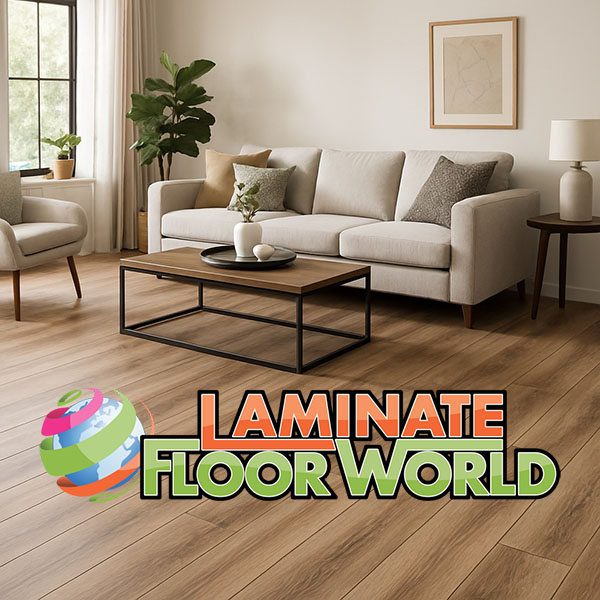Comprehensive Guide to Laminate Flooring in South Africa: Installation, Maintenance, and Benefits
Introduction
Laminate flooring is a popular choice in South African homes. It combines style with practicality, and this Laminate Flooring Comprehensive Guide will help make it a smart solution for many homeowners. Laminate floors offer the look of natural materials like wood, tile, or carpet. However, they don’t have the high cost or complex care requirements. This guide will cover everything you need to know about laminate flooring in South Africa.
Your Guide to Laminate Flooring
This guide explores the world of laminate flooring. It is a valuable resource for South African homeowners. You will learn about selecting, installing, and maintaining this popular flooring. We will look at what makes laminate special. This includes its composition and how it’s made. We will also highlight the many benefits of laminate. These include its durability, easy maintenance, and design flexibility. It is also well-suited for the South African climate.
From Installation to Maintenance
Our journey continues with the practical side of laminate flooring. We offer a detailed, step-by-step installation guide. This covers everything from preparing the room to the final touches. Are you a DIY enthusiast or considering a professional installer? This section will help you make informed decisions. It will also help you avoid common mistakes. We will also cover how to care for your laminate floors. We provide tips to keep them looking great for years.
A Smart Choice for Your Home
This guide will give you a complete understanding of laminate floors. You will be able to choose the right product with confidence. You will also know how to ensure proper installation and maintenance. Laminate flooring is a testament to modern home design. It offers a great mix of style, durability, and affordability. This makes it a smart choice for any South African home. This article is your definitive Comprehensive Guide to Laminate Flooring in South Africa: Installation, Maintenance, and Benefits. It will enhance your home and your understanding of this versatile flooring.

Understanding Laminate Flooring: What Makes it a Smart Choice?
Laminate flooring is a multi-layered synthetic product. It is often mistaken for solid or engineered wood. It is designed to look like wood, stone, or tile. This is achieved with a photographic layer under a clear protective layer. Understanding its composition helps to appreciate its advantages.
The Four Layers of Laminate
Laminate flooring has four main layers:
1.Wear Layer: This top layer is a clear, durable coating. It is made from aluminum oxide. It protects against scratches, dents, stains, and fading. The thickness of this layer affects the floor’s durability. This is often shown by an AC (Abrasion Class) rating.
2.Design Layer: This layer is a high-resolution image. It can be a picture of wood grain, stone, or tile. This layer gives laminate its realistic look.
3.Core Layer: This is the thickest layer. It is usually made from high-density fiberboard (HDF). The core provides stability and impact resistance.
4.Backer Layer: This bottom layer provides stability. It helps prevent the planks from warping. It also acts as a moisture barrier.
This layered construction gives laminate flooring many benefits. It is a smart choice for South African homeowners.
A. Durability and Longevity
Laminate flooring is exceptionally durable. Its robust wear layer resists scuffs, scratches, and dents. This makes it great for busy households. It handles heavy foot traffic well. This makes it ideal for living rooms, hallways, and kitchens. The AC rating system (AC1 to AC5) shows a floor’s durability. Higher ratings mean greater resistance to wear.
B. Affordability
Laminate flooring is more budget-friendly than many other options. It is cheaper than natural hardwood or engineered wood. Its ease of installation can also save on labor costs. This makes it a great choice for homeowners on a budget.
C. Ease of Maintenance and Cleaning
Laminate flooring is easy to maintain. Its smooth surface does not trap dirt. Regular sweeping or vacuuming is usually enough. You can also use a damp mop with a laminate-specific cleaner. It does not need waxing or polishing.
D. Versatility in Design
Laminate flooring comes in many designs. You can find a style to match any room. It can look like rustic oak, polished concrete, or natural stone. This versatility allows you to achieve your desired look. Modern laminate designs are very realistic.
E. Hygienic Properties
Laminate flooring is a good choice for people with allergies. Its non-porous surface does not trap dust or pet dander. This helps to maintain a cleaner indoor environment. It also improves air quality.
F. Suitability for South African Climate
South Africa has a diverse climate. Laminate flooring in South Africa can handle these conditions well. Its layered construction provides stability against temperature and humidity changes. This reduces the risk of warping or gapping.
G. Eco-Friendly Aspects
Many laminate flooring manufacturers use sustainable practices. They may use renewable wood sources for the core layer. They also work to reduce waste in production. Look for products with low VOC (Volatile Organic Compound) emissions.
Laminate Flooring Installation in South Africa: A Step-by-Step Guide
Installing laminate flooring can be a rewarding DIY project. It requires careful preparation and following specific steps. Professional installation services are also available across South Africa.
Pre-Installation Essentials
Proper preparation is key to a successful installation. Do not skip these important steps.
1. Acclimatization of Materials
This is a critical step. Laminate planks need to adjust to the room’s temperature and humidity. Leave the unopened packages in the room for at least 48 to 72 hours. This prevents expansion or contraction after installation.
2. Subfloor Preparation
The subfloor is the foundation for your new floor. It must be clean, dry, level, and structurally sound. Any unevenness must be fixed. A moisture barrier is often needed for concrete subfloors.
3. Room Preparation
Clear the room of all furniture. Remove any old flooring. Remove skirting boards. They will be reinstalled later. Trim the bottom of door frames. This allows the laminate planks to slide underneath.
Tools and Materials Required for Installation
Having the right tools will make the job easier:
•Laminate planks
•Underlayment
•Spacers
•Tapping block and pull bar
•Hammer or mallet
•Jigsaw or laminate cutter
•Measuring tape, pencil, utility knife
•Safety glasses and gloves
Detailed Installation Steps
The general process for installing click-lock laminate flooring is as follows:
1. Install Underlayment
Roll out the underlayment. Ensure it lies flat. Overlap the seams and tape them securely.
2. Lay the First Row
Start in a corner. Place the first plank with the tongue side facing the wall. Use spacers to maintain an expansion gap (8-12mm).
3. Connect Planks
Connect the short ends of the planks in the first row. Cut the last plank to fit. The leftover piece can start the next row.
4. Start Subsequent Rows
Stagger the joints for a natural look. Angle the long side of the plank into the previous row. Press down to lock it in place.
5. Cutting and Fitting
Cut planks to fit around obstacles like door frames or pipes. Use a jigsaw for precise cuts.
6. Maintaining Expansion Gaps
Continue to use spacers along all walls and fixed objects. This gap is essential for the floor to expand and contract.
7. Doorways and Obstacles
Slide the laminate plank under undercut door frames. For pipes, drill a hole slightly larger than the pipe.
8. Last Row
The last row may need to be cut lengthwise. Use a pull bar to tap the last row into place.
9. Finishing
Remove all spacers. Reinstall or install new skirting boards. Install transition strips at doorways.
D. DIY vs. Professional Installation
Decide whether to install the floor yourself or hire a professional.
1. Pros and Cons of DIY
•Pros: Save money on labor. Feel a sense of accomplishment.
•Cons: Requires time and effort. Mistakes can be costly. May void the warranty.
2. When to Hire a Professional
Hire a professional for complex layouts or large areas. They can also ensure your warranty remains valid. For more detailed information on installation costs, visit our Laminate Flooring Installation Cost page.
E. Common Installation Mistakes to Avoid
•Not acclimatizing the flooring.
•Improperly installing underlayment.
•Not leaving adequate expansion gaps.
•Not preparing the subfloor properly.
•Using too much water when cleaning.
IV. Maintaining Your Laminate Floors: Tips for Longevity and Luster
Proper maintenance will keep your laminate floors looking great. A consistent cleaning routine is important.
A. Daily and Weekly Cleaning Routines
Regular cleaning prevents scratches and wear.
1. Sweeping and Vacuuming
Sweep or vacuum regularly to remove dirt and grit. Use a soft-bristle broom or a hard-floor vacuum attachment.
2. Damp Mopping
Use a damp, not wet, mop. A microfiber mop is ideal. Use a laminate-specific cleaner. Dry any excess moisture immediately.
3. Spill Management
Clean up spills immediately. Use a clean cloth or paper towel.
B. Periodic Care and Protection
Preventative measures can extend the life of your floor.
1. Furniture Protection
Place felt pads under furniture legs. This prevents scratches and dents.
2. Entryway Mats
Use doormats at all entrances. They trap dirt and moisture.
3. Avoiding Harsh Cleaners
Never use abrasive cleaners, steel wool, or harsh chemicals. Avoid wax-based polishes.
4. Pet Care
Trim your pet’s nails regularly. Place mats under food and water bowls.
C. Extending the Life of Your Laminate Flooring
Follow this laminate flooring comprehensive guide to maximize your floor’s lifespan.
•Follow the manufacturer’s guidelines.
•Protect from direct sunlight.
•Maintain consistent indoor humidity levels.
•Repair any damage promptly.
V. Choosing the Right Laminate Flooring for Your South African Home
Choosing the right laminate involves several factors.
A. Factors to Consider:
1. Room Usage and Traffic Levels (AC Ratings)
The AC rating indicates a floor’s durability. Choose a rating that matches the room’s traffic level.
•AC1: Light traffic (bedrooms).
•AC2: Moderate traffic (living rooms).
•AC3: Heavy traffic (hallways, kitchens).
•AC4: Light commercial use.
•AC5: Heavy commercial use.
For most homes, an AC3 or AC4 rating is a good choice.
2. Style and Aesthetic Preferences
Laminate comes in many designs. Consider your home’s style and your personal taste. Plank size and texture also affect the look.
3. Budget
Establish a budget that includes all costs. This includes planks, underlayment, and installation.
4. Manufacturer Warranties
Check the warranty details. A longer warranty often means a higher quality product.
B. Popular Laminate Flooring Options in South Africa
•Wood-Look Laminate: The most popular choice. Mimics various wood species.
•Tile-Look Laminate: Looks like ceramic or porcelain tiles.
•Water-Resistant Laminate: Suitable for kitchens and bathrooms.
•Thicker Planks: Offer better stability and sound absorption.
Get samples to see how they look in your home. Consult with reputable suppliers like Laminate Floor World.
Conclusion
Laminate flooring comprehensive guide is a smart and versatile choice for South African homes. It offers a great combination of style, durability, and affordability. This guide has covered everything you need to know. You can now make informed decisions about your flooring.
Ready to transform your home? Explore the wide range of products and services at Laminate Floor World. For competitive pricing, visit our Laminate Flooring Prices page. Our team is here to help you find the perfect flooring solution. Contact us today for a consultation.

Leave a Reply